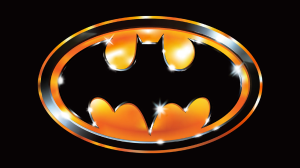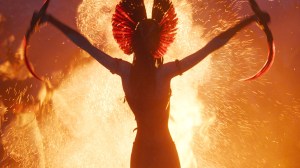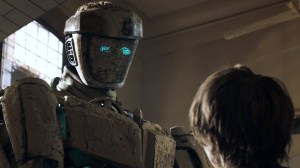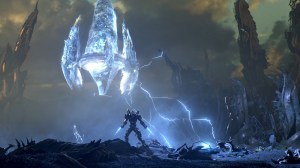Boruto has been getting a lot better ever since Two Blue Vortex’s major time-skip, and a big part of is because of the total shift of antagonists. While Naruto Next Generations, Boruto’s first part, focused more on the Otsutsuki clan’s presence directly, Two Blue Vortex has instead focused on a new group of enemies indirectly connected to the Otsutsuki. More about all of that after the spoiler warning.
Videos by ComicBook.com
Warning: Spoilers ahead for Boruto: Two Blue Vortex up to Chapter 24!
Two Blue Vortex is marking Boruto’s attempt at a major narrative trope, and it’s one with which battle shonen fans will already be very familiar: enemies who unexpectedly gain sentience. The new enemies, called the Divine Trees, follow a format very reminiscent of Hunter x Hunter’s universally acclaimed Chimera Ants. Here, we’ll explain how Boruto’s take on the trope is different from shonen’s most renowned execution, and what makes it so effective.
Boruto: Two Blue Vortex’s Divine Trees Follow a Time-Tested Pattern

The Divine Trees emerge in Two Blue Vortex after most Kara Inners are defeated, leaving Code to inherit the will of the Otsutsuki by sacrificing Boruto or Kawaki to bring the Divine Tree in reality and swallow up all of Earth’s knowledge and chakra. To buff up his assault capabilities, Code divides the Ten-Tails into creatures called Claw Grimes with the ability to turn shinobi into Divine Trees, harvesting their chakra and immobilizing them entirely. Starting with Jura, the incarnation of the Ten-Tails, some of the Ten-Tails partitions start to replicate the chakra (and therefore souls) of shinobi; other Claw Grimes have turned into Divine Trees, becoming humanoid evolutions of Claw Grimes. This development was unexpected by virtually everyone, including Code.
The pattern of creatures audiences don’t expect to be self-aware, gaining the capacity for sentience, is tried and tested even outside anime and manga (like Blade Runner’s replicants, for example). But the specific method of evolution that Two Blue Vortex uses is very evocative of Hunter x Hunter’s Chimera Ants, where the development of sentience is directly tied to the consumption of human targets.
We’ll avoid too many spoilers about the Chimera Ants to keep this article friendly for those who haven’t seen or read Hunter x Hunter, but the basic gist of their evolution is tied to their absorption of traits from their targets. Eventually, this leads to the birth of a highly-intelligent overpowered “King”, Meruem. Although he sees the Chimera Ants and their prompt evolution as evidence of their superiority to humans, a major part of the Chimera Ant arc is witnessing his actual interactions with people and his development of a sort of “conscience” through the intellectual curiosity inherently tied to his humanoid evolution.
What Makes Boruto‘s Divine Trees So Surprising and Effective?

Despite their similarities, Boruto’s execution of this humanoid evolution concept certainly has its own strengths, and it’s provided some of Two Blue Vortex’s most thought-provoking (or just generally interesting) moments yet. While Code wants to enact the Otsutsuki’s will as fast as possible, Jura, the leader of the Divine Trees, becomes curious about humanity and is endlessly thirsty for their knowledge. One of the coolest moments of Two Blue Vortex so far is when he explicitly puts everything on hold so the Divine Trees can keep accumulating knowledge.
There’s more to it than that: the fact that Jura just wants to read and learn (for now) leads to some really interesting developments on its own. First, Shikamaru puts out an order not to bother him and to treat him like a normal customer when he comes to Konoha to buy books, out of fear of his power and bemusement at his nonviolent curiosity. Second, the Divine Trees’ nascent awareness of the human world plays heavily into strategy against them: the “Matsuri and Ryu” arc sees the strategy against the titular Divine Trees be based around manipulating their curiosity, passive disposition, and undeveloped understanding of humans.
Above all, what makes Boruto’s Divine Trees so effective is the use of contrast. On purpose, Boruto’s villains in its first part were fairly one-note: the Otsutsuki just wanted to consume the planet; the Kara androids, experiments, and clones just want to carry out the only orders they’ve ever known. This stands in stark contrast to the rich emotional life of Naruto’s villains, which makes it especially notable. Then along comes Two Blue Vortex: the Divine Trees are brilliantly executed because not only are they not “evil for the sake of evil”, they hardly even qualify as “evil” to begin with.
The Divine Trees stand apart from both Naruto and Boruto: Naruto Next Generations’ villains and might, in turn, become the most interesting villains either series has ever seen. At the very least, they’re a fittingly potent example of the evolution of Naruto and Boruto’s villains writ large.
Let us know how you think the Divine Trees stack up against similar enemies in the comments! And if you want to get hype with us for Boruto Season 2, click through to the link below.









